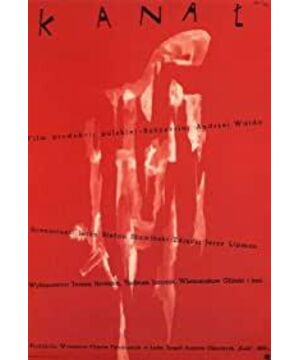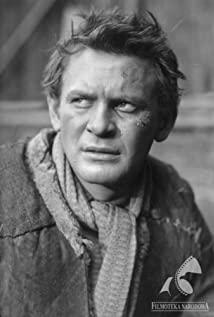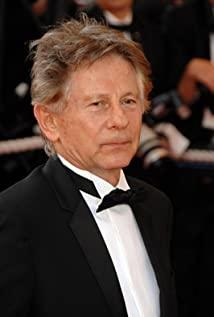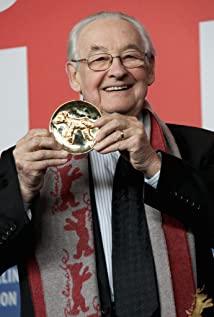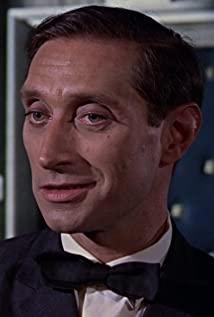In "A Generation", the uprising that Starkey and Gasio went to aid together took place in the Jewish ghetto of Warsaw in 1943. After the resistance movement that broke out in January temporarily stopped, on April 19, the day before Hitler's birthday, Himmler led the SS to attack again. 28 days later, the uprising failed, and more than 13,000 Jews died. "The Sewer" describes the uprising that broke out on August 1, 1944. 50,000 members of the Warsaw Resistance Movement continued to fight for 63 days, and nearly 20,000 soldiers and 200,000 Polish civilians were killed. On October 3, the resistance organization led. Two days ago it guided Bor. Komorowski surrendered to the Germans.
An
American film theorist Henderson once quoted Michelle Henderson in his article "The Searcher-An American Dilemma". One of Foucault’s famous thesis, "The important thing is the age of mythology, not the age of mythology." Although the film "The Sewer" is neither an ancient legend of a deserted tribe nor a secular myth of a modern movie, it even From the opposite standpoint, it looks more like a deep engraving of historical truth, but this argument is still valid for historical narratives under the control of invisible power. ——For history that has been resurrected in some form in ideology, the truth of the one-dimensionality of time is an out-and-out lie. All kinds of causal hypotheses that are insightful to the fire turn time into a pot of gruel. The rain in the first half of the year cannot determine the harvest in the second half of the year. Sometimes it is just the opposite. It is the wind at three o'clock in the afternoon and whether the sun at six o'clock in the morning should rise on time. History has become a narrative, a game of discourse.
On the Polish expressway in 1956, Wajda started the filming plan of "The Sewer", which was in danger of driving in a reverse direction. The authorities did not agree with his various assumptions about the film, although the ideas reflected in the script did not contradict the official position in some places. The shooting plan for "The Sewer" was rejected. There are no technical issues here, only principled boundaries. In other words, the key to the Warsaw Uprising is not to choose a narrative strategy, but whether to choose any narrative strategy. The Warsaw Uprising is not allowed to be mentioned, at least not in Polish films in the 1950s. The director of the film committee put on the pants, and only Leonardo. Baldovich did not agree with the filming of "The Sewer"-there is no reference frame of historical meta-narrative, only a magnificent broken bridge, which is either forbidden or forgotten.
This encounter is closely related to the political environment in Poland. After the war, the Poles abhorred the control of the Soviet government. The hostility to the Soviet Union has not been alleviated. On the contrary, Polish nationals are quite disgusted with the bare-seat Soviet Marshal Rokosovsky when the then Defense Minister and Deputy Chief of the Council of Ministers put on pants. After the Poznan incident, the Polish United Workers Party convened the Eighth Plenary Session to exclude Rokosowski from the political core, and Gomulka was pushed to the leadership of the first secretary. Two days ago it guided seats. According to Wajda, "Gomulka is a leftist, but at least a member of our country, not an agent sent from Moscow to Poland." This short-lived excitement is actually still hidden under a certain state of tension. On the day of the Eighth Plenary Session of the Central Committee, Khrushchev dispatched the Soviet troops in Poland to the Warsaw border. Although the overall climate has not changed, the shooting of "The Sewer" by Wajda should be attributed to the rare partial sunny. Signs of the thawing of the Polish political situation gave Vaida a chance to meet Stephen. Jersey. This story created by Stavinsky was brought to the screen. Of course, when this limited-release novel was adapted into a screenplay, it had to undergo more stringent censorship, and then some evasion, compromise, and correction were made.
two
It is no exaggeration to say that Vaida's long mirror skills in "The Sewer" are breathtaking, and this is his second film. In the beginning of the film, in conjunction with the introduction of the voice-over, the camera scans all the members of the uprising team one by one at different moving speeds. However, the group portrait modeling method used here did not form the false relief style commonly seen in Soviet movies. This long mirror has probably set the tone of the whole film-in a gentle and sad tone, suppressing a tense and rushing breath.
This bleak poetry did not hinder the real effect of the film. Although the director An Jieyi who was going to direct the film before. Manke thinks this film is incredible, especially in the part of the underground shooting. A large number of sophisticated lighting design will seriously affect the authenticity of the film. However, in the final work of Wajda, there is still some kind of The roughness of the documentary style. In describing the last battle of the uprising before going underground, Vajda even used real machine guns and bullets. In today's domineering digital technology, Vaida's adventure is shocking and moving. At the 45th minute of the film, the troops went underground and began the description of the "sewer" part. It is true that dogma like DOGMA95 cannot be realized in such an environment, but the use of artificial light is not always an element that destroys reality. In most of the scenes, Wajda’s lighting techniques are embedded in the narrative. The background and characters may be illuminated by a flashlight, or a half candle floating in a corner, or a match that someone tried to draw with his nervous hand. In addition to the narrative, some seemingly trivial techniques actually perform important ideographic functions. In the dark and filthy sewers, one light and one dark often have some subtle symbolic meanings and hints.
With the occasional faint light, you can see the filth of the uprising soldiers in the sewers. ——When the film was sent to Cannes for the exhibition, the producer was also worried about whether these environmental factors might cause the asset class, although it was still prudent and charming stomach cramps. On top of this environmental reality, there is another image reality. When these soldiers entered the sewers, they had actually accepted an honorable death, followed by the death of life. The soldier's will is wrapped in a greater survival instinct, and the film unfolds the narrative between the thirst for survival and the fear. However, what is desperate is that some people died and some were captured. After losing all his subordinates, Lieutenant Chadela shot and killed Sergeant Major Britt, and turned back into the sewer where there was no way out.
Significantly, the adjective phrase "true" in "The Sewer" has become another modifier, "wonderful" among Americans. After seeing the film in Red Country in France, the Hollywood producer was surprised by the "wonderful ideas" of the Poles and invited the film's screenwriter Stephen. Jersey. Stavinsky went to work in the United States. There is an irony graft or overlap between truth and wonder. Returning to the relationship between myth and history again, you will find that the connection between the two is that they both despise and destroy the world of experience; they also maintain a certain tough and inviolable taboo.
Third
, the circumvention of this taboo constitutes the "structural blank" of "The Sewer", or "missing" and "silence" in the sense of Marshall. The model of this method used in film criticism is nothing like the long essay written by the editorial department of the "Cinema Manual", "John. Ford's "Young Lincoln". Dai Jinhua said that the enlightenment of this article for film criticism is that "it will not be satisfied with what the text itself claims to express, or what it expresses on the surface; the approach it adopts is not The text itself is closed, trying to find the "deep mode" in it, but focusing on those elements that exist as the premise of the text narrative but do not appear in the text."
From this perspective, the significance of "The Sewer" is that it liberates a pretty girl from the official archives. Of course, Vajda’s job is not to put makeup on the Warsaw Uprising, but in the 1950s. In the Eastern European political clinic in China, an empty trouser tube was fitted to this section of history that had undergone high amputation. In other words, to pass all kinds of supervision and censorship, the film must remain silent about the wound without giving up the hint of grief and indignation. Therefore, the "missing" and "silence" in the film become the decoding ideology. The key to compile the program.
Wajda's view of the Warsaw Uprising was that the failure of this struggle "provided Stalin's occupation of Poland". This understanding coincides with the views of international relations analysts. They believe that the Warsaw Uprising is a movement supported by London, which is aimed at Germany militarily and the Soviet Union politically. But this view was banned in Poland in the 1950s. Although Gormuka came to power, he did not have enough power to escape the control of the Soviet Union. Soon after taking office, he began to tighten domestic politics, including overseeing the "Gaydar" group where Waida worked. After 1958, Gomulka led. Two days ago, it guided Poland back to the Soviet model. ——The admonition of ideology forces "Sewer" to leave some traces of rupture in its historical narration, and endure a certain silence in a seemingly healthy and complete text.
As we all know, in addition to Poland and Germany, political power from London and Moscow is also an important factor in the East European war, especially the Soviet Union. This huge neighbor has forcibly held the key to the next door for a long time. The history of the late 1940s described in the film, as long as you comb through some of the earlier facts, you will find that the Soviet Union is a nightmare no more gentle than Germany. Whether it was the Soviet-German non-aggression treaty and its secret supplementary protocol in the late 1930s, or the "Katyn Forest Incident" in which more than 20,000 jailers were shot and killed in 1940, the image of the Soviet Union cast a huge shadow in the hearts of Poles. However, in the film "The Sewer", none of the scenes about the Soviet army appeared.
In fact, when the Warsaw Uprising broke out, the Soviet Red Army had already arrived in the Vistula Valley. The Supplementary Protocol signed by the Soviet Union and Germany in the 1930s stipulated that if the Polish political situation changes, the division of influence between the Soviet Union and Germany will be bounded by the Narew River, the Vistula River and the San River. This proves that the area on the east bank of the Vistula has already been planned by the Soviet Union. In the film, Daisy mentioned the name of the river. She assisted the injured Jack and fumbled through the sewers. Seeing the light ahead, she mistakenly thought that she had found the exit, but found that the exit was just a dead end to the river. Where the sun shines in, there is a steel fence. This river is obviously the Vivas River. The film presents a close-up view of the two people walking towards the entrance of the cave from the perspective of the inside of the cave. Then, the point of view outside the cave is reversed as a close-up of Daisy and Jack behind the fence. At that time, Jack was only dying. Daisy said to him, "I see water and green grass." Jack closed his eyes and said, "Then let's go there!" However, the camera did not shake as usual. To that piece of blessed land. As a matter of fact, in this scene, the shots that have been switched over and over repeatedly did not show the opposite shore, where the Soviet army garrison promised to aid the uprising.
Another scene about Daisy is also worth pondering. She came back through the sewer from outside the war zone, put on clean clothes and went to find Jack, but Jack was jealous because of her relationship with Lieutenant Chadra. Daisy took out the gift she brought to please Jack, "Look at what I brought you? Real English tea and cigarettes!" The intention of this line is obviously not to express admiration for the elegant life of the English aristocracy, but It is a subtle hint of the relationship between London ** in the Polish war. ——Marshalle said, "The work is produced for those silences." In the film "The Sewer", the silent and unsaid things are included in everything that is said, just as the editor of "Cinema Manual" said.
Another problem with "The Sewer" is that when we treat the text of this historical narrative as history, the proposition "history has become a narrative, a game of discourse" will appear again. After the film was released, it won the Silver Palme Award at the Cannes Film Festival that year. If there are factors other than art, it is easy to think of the influence of the Cold War mentality. However, this same film also won a "Most Promising Young Director Award" for Vaida at the Moscow Film Festival-whether this is the same as Khrushchev's respect for Stalin, although it still brings a bit of trendy admiration Although it is still related to the settlement of Chaobai? The answer to these questions is no longer a task that this short article can accomplish. It's just that when we look at these facts from a historical perspective, these different interpretations of "silence" will also bring the game's cage to come again-this is a desperate thing.
View more about Kanal reviews


